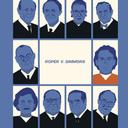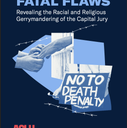
This fall, the U.S. Supreme Court will hear a Georgia case, Foster v. Humphrey, in which an all-white jury sentenced a black man to death after prosecutors struck every black prospective juror in the case. The Court will determine whether prosecutors violated the Court’s 1986 decision in Batson v. Kentucky, which banned the practice of dismissing potential jurors on the basis of race. In anticipation of the case, The New Yorker published an analysis of tactics used to evade Batson challenges by providing race-neutral reasons for striking jurors. In Philadelphia, a training video told new prosecutors, “When you do have a black juror, you question them at length. And on this little sheet that you have, mark something down that you can articulate later.… You may want to ask more questions of those people so it gives you more ammunition to make an articulable reason as to why you are striking them, not for race.” In the 1990s, prosecutors in North Carolina — whose use of peremptory strikes have been held to violate that state’s Racial Justice Act — held training sessions featuring a handout titled, “Batson Justifications: Articulating Juror Negatives.” Defense attorneys can challenge these reasons, but such challenges are rarely successful. Stephen Bright, president of the Southern Center for Human Rights, who is representing Foster, said, “You’re asking the judge to say that the prosecutor intentionally discriminated on the basis of race, and that he lied about it. That’s very difficult psychologically for the average judge.” Justice Thurgood Marshall recommended banning peremptory strikes so as to stop racial bias in jury selection. Louisiana Capital Assistance Center director Richard Bourke suggests a more politically realistic reform: track the racial makeup of juries in order to raise public awareness of bias.
(G. Edelman, “Why Is It So Easy for Prosecutors to Strike Black Jurors?,” The New Yorker, June 5, 2015.) See Race and U.S. Supreme Court.


